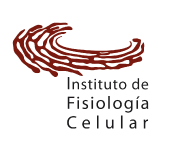Regulation of ThermoTRP Channels by PIP2 and Cholesterol
Rosenbaum, T., Morales-Lázaro, S.L. (2023). Regulation of ThermoTRP Channels by PIP2 and Cholesterol. In: Dantsker, A.R. (eds) Cholesterol and PI(4,5)P2 in Vital Biological Functions. Advances in Experimental Medicine and Biology, vol 1422. Springer, Cham.
Transient receptor potential (TRP) ion channels are proteins that are expressed by diverse tissues and that play pivotal functions in physiology. These channels are polymodal and are activated by several stimuli. Among TRPs, some members of this family of channels respond to changes in ambient temperature and are known as thermoTRPs. These proteins respond to heat or cold in the noxious range and some of them to temperatures considered innocuous, as well as to mechanical, osmotic, and/or chemical stimuli. In addition to this already complex ability to respond to different signals, the activity of these ion channels can be fine-tuned by lipids. Two lipids well known to modulate ion channel activity are phosphatidylinositol 4,5-bisphosphate (PIP2) and cholesterol. These lipids can either influence the function of these proteins through direct interaction by binding to a site in the structure of the ion channel or through indirect mechanisms, which can include modifying membrane properties, such as curvature and rigidity, by regulating their expression or by modulating the actions of other molecules or signaling pathways that affect the physiology of ion channels. Here, we summarize the key aspects of the regulation of thermoTRP channels by PIP2 and cholesterol.



